
Vietnam Coffee, A Gift With Vietnam Identity: Coffee is not only a drink but also a culture and lifestyle of Vietnamese people. Unique creations such as egg coffee, and salted coffee… have conquered many world cuisine followers. The following article will give a general overview of Vietnamese coffee, from the appearance of coffee in the S-shaped country to the formation of the Vietnamese coffee culture.
1. Vietnam coffee trees
1.1 Coffee trees in Vietnam

- The first coffee tree was brought to Vietnam by the French in 1857. From these first and second, in general, plantations in Indochina, the coffee tree has made strong changes, escaping from subsidized institutions, and becoming one of the most important coffee trees in the world. the crop with the highest export value (after rice), and put our country in the 2nd position on the world coffee map.
- Coffee production steadily increased by 20%-30% annually during the 1990s, with small coffee gardens planted on half a million plots (two to three acres). This has helped turn the economy around.
- During the reform, the coffee industry was nationalized, flourished in the Central Highlands provinces, and private enterprises were replicated, leading to a sudden development of the coffee processing industry. The partnership between growers, produccarsrs, and the state has resulted in the branding of finished coffee and the export of retail products. Typical exam, samples include Trung Nguyen coffee in 1996 and Highlands Coffee in 1998.
- In recent years, the government departments and agencies have sought to improve the quality of exported coffee, including the expansion of tea-producing areas – today mainly grown in the northern provinces such as Quang Tri. (Quang Tri) and Son La. However, the most important area for coffee, in general, is still the Central Highlands (Dak Lak, Kon Tum, and Lam Dong. The Central Highlands have led the production of Robusta coffee both in terms of area and output. in Vietnam, but also around the world with some geographical indications such as ‘Buon Ma Thuot’, Cau Dat – Da Lat, .. known for its strong taste due to the characteristics of the soil.
1.2 Percentage of Vietnam who drink coffee
- The percentage of Vietnamese people using coffee is quite high, especially in big cities. Of the total drinks selected for a week in Ho Chi Minh City, this drink accounted for 26%. This number can be said to be quite high compared to the range of drinks available on the market.
- According to data collected from a survey, the percentage of Vietnamese people using hot and cold coffee by gender, 75% of men prefer a hot drink, and 65% choose iced coffee. In women, the rates are 25% and 35%, respectively. From this, it can be seen that men consume more than women.
1.3 Demand for coffee of Vietnam people
- Coffee can be used at many times of the day. Depending on preference, each person can use it at different times. According to the survey, 90% drink coffee with breakfast, 50% drink before breakfast, 10% drink after breakfast, 10% drink after sports, 10% drink before bed, and 90% drink as soon as you wake up. Many times using coffee has contributed to the increasing percentage of Vietnamese people using coffee.
- Many people choose coffee to relax after tiring working hours. In addition, there is the option of sipping a cup of coffee and talking with family or friends.
- Coffee has a characteristic bitter taste and attractive aroma. FroTheove has made it a favorite drink of many people. Up to 40% of people choose to use this drink because of preference. This proves that coffee has become a part of many people’s lives.
- Many people use coffee in the morning or at night to help them stay awake. In orTod the heavy when not awake, many people have used it to stay awake. When staying up late studying or running a deadline, this drink is often the choice of many people to help overcome drowsiness.
- When working or studying, it always requires high concentration. So many people have come to believe that drinking coffee helps to increase their ability to concentrate.
1.4 How much coffee does Vietnam export to the world?
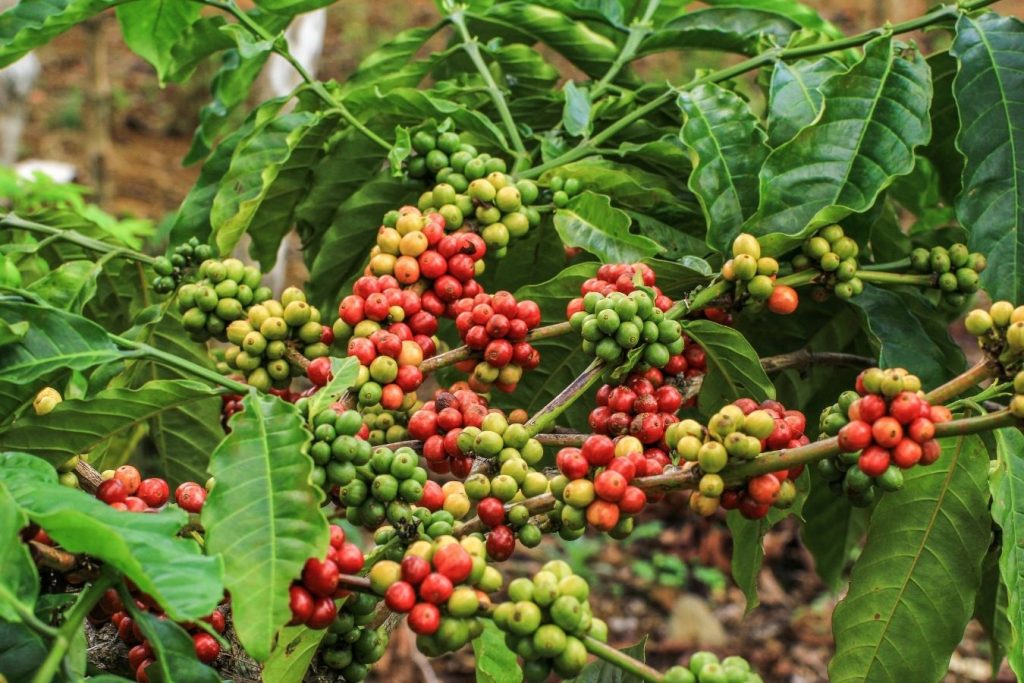
- In recent years, although the world economy has had many difficult times leading to a decrease in purchasing power, Vietnam’s coffee export has maintained a very encouraging growth rate, reaching 8.2%/year. the year with an average turnover of 3.13 billion USD/year in the period 2011 – 2018, accounting for 15% of the total export of agricultural products of the country.
- Our coffee products have been exported to more than 80 countries and regions, accounting for 14.2% of the global green coffee export market share (ranked second, after Brazil); In particulate ar, expo ort roasted and ground coffee has accounted for 9.1% of the market share (ranked 5th, after Brazil, Indonesia, Malay, AsAsiaand India), creating many opportunities and prospects for the coffee industry when Vietnam penetrates deeper into the international market through signed free trade agreements.
- EU is Vietnam’s largest coffee-consuming market, accounting for 40% of the total volume and 38% of the country’s total export turnover; followed by Southeast Asia, accounting for 13% of the total volume and total turnover…
- The world’s leading coffee exporting countries such as Brazil, Indonesia, and Colombia… all mainly export coffee in the form of green beans, that is, only in post-harvest processing activities. Some countries have roasting and grinding operations, but only a small percentage of total coffee exports.
- Particularly for Vietnam, since the mid-1990s of the last century, post-harvest processing has been paid great attention. As a result, from having the selling price at Vietnamese ports down to 400-500 USD lower than the reference price at the London Commodity Exchange, Vietnam has gradually narrowed this gap and up to now, the selling prof ice Vietnam’s Robusta coffee has matched the world market price.
2 . Famous coffees in Vietnam
Not everyone knows the names of famous coffees in Vietnam, although coffee is a popular drink that many people love. Vietnam is the second-largest coffee exporter in the world with a wide variety of coffees. 5 popular types of coffee are popular today: Robusta, Arabica, Cherri, Moka, and Culi.
2.1 Vietnamese Robusta Coffee
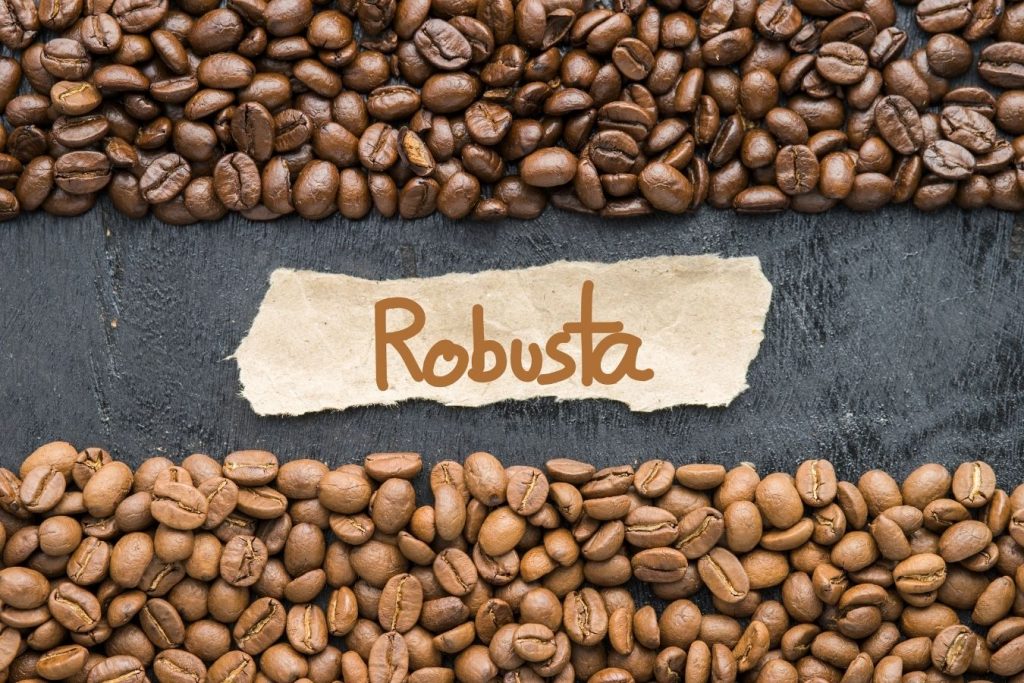
Robusta coffee is also known as Voi coffee. This is a type of coffee that is very suitable for the climate and soil in the Central Highlands of Vietnam, annually reaching 90-95% of the total coffee production. This type of coffee has a strong aroma, is not sour, has high caffeine content, suitable for Vietnamese taste.
The beans of Robusta coffee are smaller than Arabica. Must be dried directly, not fermented, bitter taste dominates. It is grown at altitudes below 600m, in tropicclimatesate, and present in many countries. Vietnam accounts for a third of the world’s coffee consumption.
2.2 Arabica
Jute is one of the types of coffee with slightly long beans, grown at an altitude of over 600m. Arabica berries are harvested, then fermented, washed, and dried. The taste of Arabica is a bit sour, people often compare it to when they eat a lemon, it will be very sour, but immediately see the bitterness of the peel.
2.3 Cherry
Cherry coffee or jackfruit coffee includes two main varieties, Liberica and Exelsa. This variety is not very popular but has very good disease resistance and high yield. It is grown in the dry, windy, and sunny regions of the Highlands. Yellow beans, shiny very beautiful. Cherry is very suitable for women’s preferences with a blend of smell and taste creating a rustic, noble,e, and noble feeling.
2.4 Culi coffee
One-fruit cult coffee has only one bean. It has a bitter taste, passionate aroma, high caffeine content, and black water.
2.5 Vietnam Moka coffee
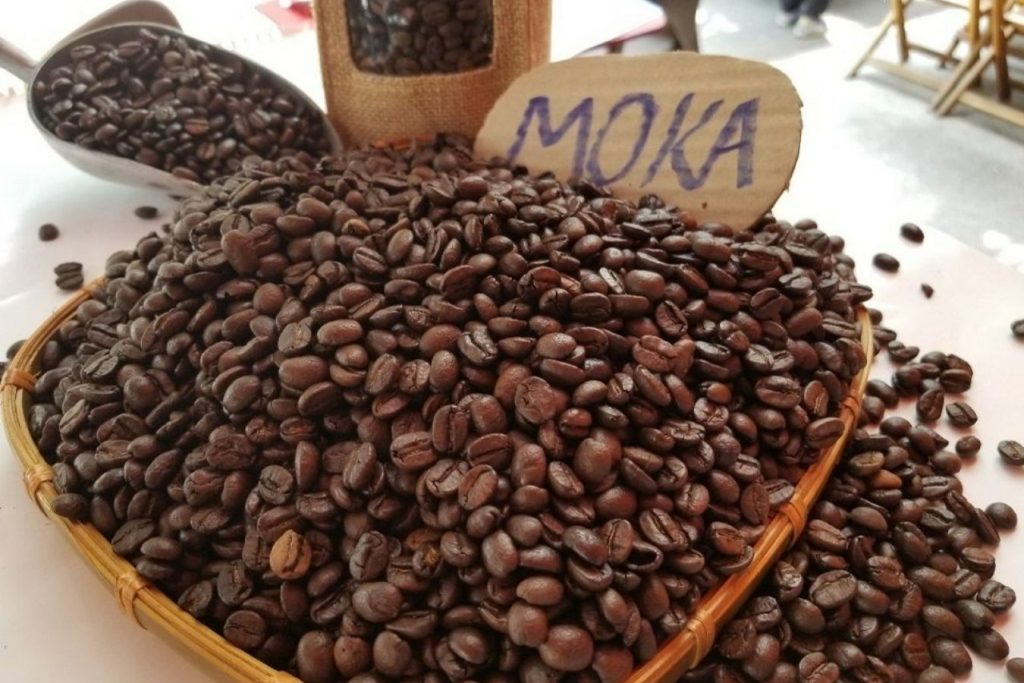
Moka coffee is one of the famous coffee lines of the Arabica genus. In Vietnam, moke is a rare coffee, always priced higher than other types. Moka seeds are much larger and more beautiful than other varieties. Its fragrance is very special, very luxurious, ecstatic, and slightly acidic tastefully, for the connoisseur.
3. Famous Vietnam coffee brands:
3.1 Highland Coffee
- Highland Coffee was born from David Thai’s endless passion for Vietnamese coffee beans. In 2002, a cafe with the foreign name Highlands was established. Highlands has diverse product lines and sophisticated and simple decoration space.
- Up to now, Highlands Coffe still maintains the stage of manual coffee classification to select each quality coffee bean. Although the price is a bit high compared to the common ground, every branch of Highlands has a stable customer base.
3.2 Trung Nguyen coffee, the king of Vietnam Coffee
- It can be said that the name Trung Nguyen coffee is considered the beginning of the coffee market in Vietnam. Trung Nguyen’s products were selected by the Ministry of Foreign Affairs as “Cultural Diplomatic Ambassador”. As gifts for Heads of Strand te, domestic and foreign politicians. In addition to coffee products, Trung Nguyen also has products and services such as Franchise shops, coffee tourism, etc.
- Despite going through many ups and downs, until now, the name Trung Nguyen coffee is still a familiar destination for coffee lovers. Trung Nguyen Coffee is the only Vietnamese coffee brand present on Vietnam Airlines flights. At the end of 2011, the G7 instant coffee product was officially present at the world’s leading supermarket groups in the US and E-Mart in Korea.
3.3 Starbucks

Starbucks coffee company is headquartered in Seattle, Washington, USA. The airline has 22,519 stores in 67 countries, in Vietnam, it also has 11 stores in big cities such as Hanoi and Ho Chi Minh City. Not only targeting international customers living and working in Vietnam, but the youth segment is also the target audience of Starbucks. The number of stores in Ho Chi Minh City is not much, but the number of customers of each branch is very large and stable.
3.4 The Coffee House
The coffee house was born in recent years but is very popular with young people. Not only in terms of form, but drinks and service style are also highly appreciated. Therefore, even though the price is a bit high like The Coffee House, it is still crowded on weekends.
3.5 Phuc Long coffee & Tea House coffee
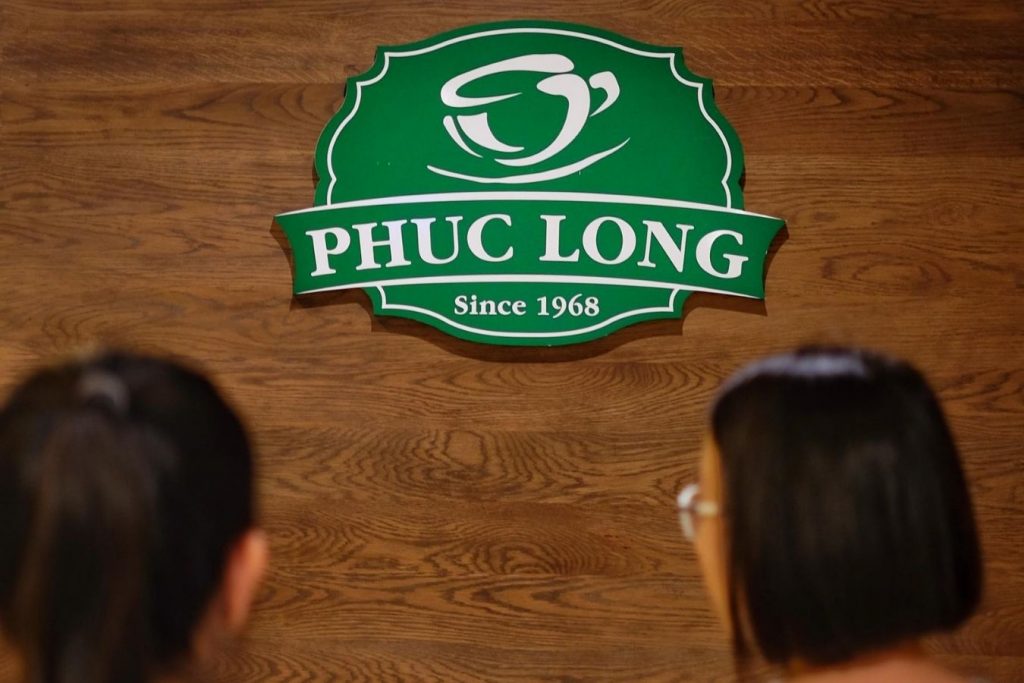
For more than half a century, Phuc Long has always maintained the value of dedication to serving customers. Not only good in terms of quality, service, or working environment but also help bring true values of tea and coffee. Many people prefer Phuc Long coffee because of its very own aroma and moderate quality of coffee. Phuc Long’s cafes are increasingly present in major commercial centers in Vietnam.
4. Overview of Vietnam’s coffee market
4.1 History of Vietnamese coffee
- Coffee trees came to Vietnam in the footsteps of the French in the mid-19th century.
- Tea coffee (arabica) is the first coffee variety introduced to our country in 1857, through several French missionary priests. The first is to be experimentally planted at Catholic churches in some provinces in the North such as Ha Nam and Phu Ly. After that, coffee trees were planted in Thanh Hoa, Nghe An, and Ha Tinh provinces. Then spread to the central provinces such as Quang Tri and Quang Binh. After the war, the coffee and tea gardens here continue to be maintained. Therefore, this area has a very high distribution of coffee and tea trees. Finally, new coffee trees gradually developed in the South Central Highlands and Southeast, and people began to realize that the Central Highlands was the most suitable place to grow coffee.
- After the Arabica coffee variety was introduced to Vietnam in 1857, then in 1908, France imported two more varieties of coffee into Vietnam. Those are the coffee beans (robusta) and the coffee jackfruit (Liberia). After a while, Western colonists saw that coffee and tea varieties did not bring high economic efficiency, so they brought coffee varieties from Congo to plant in the Central Highlands. Here, coffee trees grow very strongly, and the area of coffee trees is increasing. And the Central Highlands has become the area with the largest coffee-growing area in our country both in terms of scale and reputation, nowhere in Vietnam has famous coffee at home and abroad, and at the same time associated with a geographical area. bring many legends like Buon Ma Thuot coffee.
- Stretching through a historical process in Vietnam, in the end, the Central Highlands is the place where all the advantages of both ecology and soil are suitable for coffee trees to grow and develop. Robusta coffee products have become a symbol and pride of the Central Highlands in general, and Buon Ma Thuot in particular in the context of international economic integration.

4.2 Coffee growing area in Vietnam
- In 2018, the country’s coffee area was very large, about 720,000 hectares. In which, about 670ha Robusta (accounting for 93% of the area), reaching about 1.71 million tons (about more than 96% of output). Arabica coffee, with an area of 50,000 hectares (only nearly 7%), production of nearly 67,000 tons (only nearly 4%). (the figure is about 70,000 ha higher than the official data).
- Vietnam’s coffee yield is often the highest in the world, averaging 2.6 tonnes per hectare for Robusta and 1.4 tonnes for Arabica. Robusta coffee has the highest yield in Kotum province, followed by Gia Lai, Lam Dong, Dak Nong, and Daklak. Coffee productivity in Dak Lak province is not very high, possibly because the large area is old, or intercropped with trees such as avocado, durian, and pepper.
- That also means that sustainable development in Dak Lak is better than in the rest of the provinces. Dak Lak has always pioneered sustainable coffee growing and farming models. Therefore, the economic situation of the people is more uniform and socially stable than in other provinces.
4.3 Instant coffee brands in Vietnam
- As one of the leading coffee exporting countries in the world, Vietnam’s coffee market is also very rich and diverse in both brands and products. One of the products that are being favored by customers today is instant coffee. This is an extremely convenient product, compact design, simple preparation, time-saving … and still retains the same delicious taste as filter coffee.
G7 instant coffee

- Is a brand of instant coffee of Trung Nguyen Group, including many different products such as G7 3in1, 2in1, G7 black instant… G7 instant coffee was first introduced to the Vietnamese market at the end of 2003. Up to now, G7 products have been exported to more than 60 countries around the world and are present on the shelves of supermarket chains in the US, UK, France, Germany, Japan, Korea, China…
- To create a true, aromatic, delicious G7 instant coffee of superior quality to the world’s top coffee. Trung Nguyen has applied roasting and processing technology in Buon Ma Thuot and the control center in Germany. Possessing Europe’s dual technology and inimitable know-how have created an unmistakable Trung Nguyen.
NESCAFE’s instant coffee
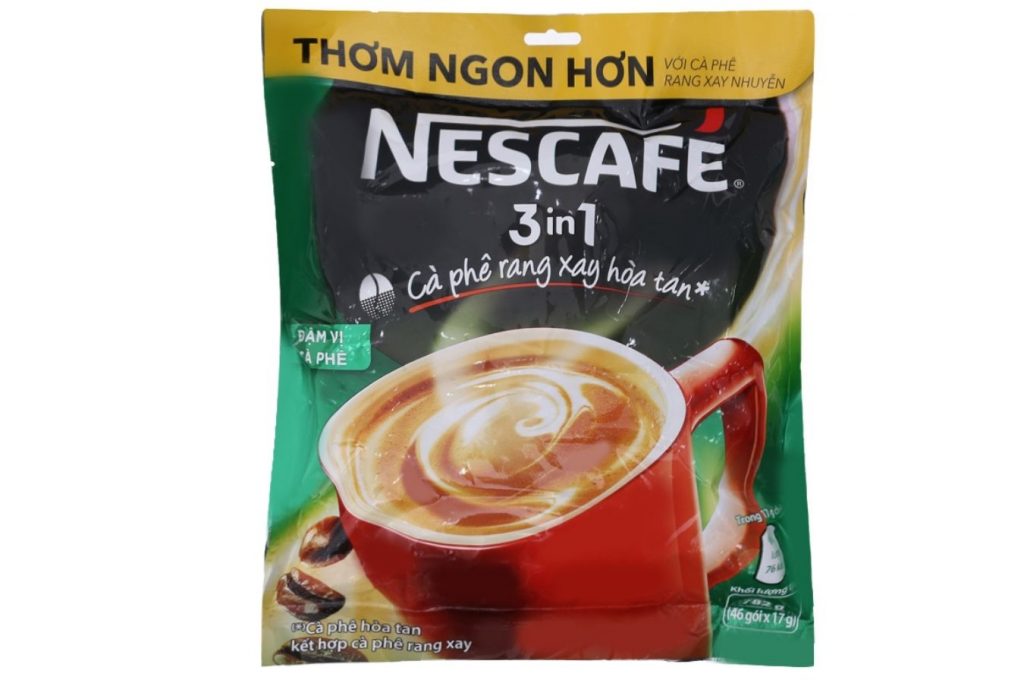
Born more than 100 years ago, Nescafe’ has affirmed its position in the volatile coffee market. Nescafé was officially produced in Vietnam in 1998 and has always received the trust and love of many Vietnamese families. With the desire to bring Vietnamese people a delicious cup of coffee and moments of great coffee enjoyment. Nescafé has selected 100% quality Vietnamese coffee beans that are harmoniously combined with sugar and milk, bringing you a delicious, rich, and diverse cup of coffee for all tastes.
VINACAFE
- Vinacafe is a brand of instant coffee products belonging to Vinacafé Bien Hoa Joint Stock Company. This is also one of the instant coffee brands in Vietnam trusted by customers. Vinacafe focuses on busy working people, the form of instant coffee is the key product of the company with many different flavors.
- With an instant coffee factory with a capacity of 3,000 tons/year, Vinacafe becomes the leading enterprise in terms of capacity and technology for instant coffee production in Vietnam. Vinacafe’s instant coffee has 4 main product lines with different flavors and characteristics for consumers to choose from Vinacafe Gold Original, Vinacafé Gold Gu Dark, Vinacafé Gold Gu Darker, Vinacafé 3in1 Original Buon Ma Thuot.
Highland Coffee
- Being in the top 5 instant coffee brands in Vietnam, it is impossible not to mention Highlands Coffee. From the love of Vietnam and the passion for coffee, in 1999, the Highlands Coffee brand was born with the aspiration to elevate Vietnam’s long-standing coffee heritage and spread the spirit of pride, and harmonious connection between tradition and tradition. traditional with modern. Through a long journey, the Highlands Coffee brand has constantly brought delicious and consistent coffee products to suit the taste of customers.
- Choose to sort the coffee by hand to select quality brands ns, and roast new coffee every day to bring the best to customers. Not only a familiar drink, but the coffee cups of the Highlands Coffee brand also carry a cultural mission that reflects a part of the modern lifestyle of Vietnamese people.
4.4 Vietnam’s coffee market today
- The competition from the inside to the alley, from the high-end to the affordable segment in the Vietnamese coffee market has never ceased to be hot.
- Another foreign name of Thailand entered the “fire pan” of Vietnamese coffee – Amazon coffee. This is just the latest foreign brand name to express its ambition to the billion-dollar coffee retail chain market of our country.
- Vietnam’s per capita coffee consumption per year is three times lower than the world average, so it’s easy to see why the Vietnamese coffee market has always been attractive. But attractive does not mean “sure to win”.
- Starbucks can be seen as an example. Although it has been successful around the world with more than 30,000 stores, it accounts for less than 3% of the coffee market share in Vietnam.
- Vietnamese people can buy coffee for less than 1 USD/cup, much cheaper than the coffee of foreign chains. Not to mention a special point in Vietnamese coffee culture is sidewalk coffee. It’s hard to count all these coffee spots all over Vietnam.
- A sidewalk corner, intersection, or apartment corner… can also become an ideal coffee business place. Therefore, on the sidewalk, the competition in the popular segment is equally “hot”.

5. Benefits of coffee
- In coffee there is a lot of caffeine which is a substance that has many effects on the body, and at the same time beneficial minerals and compounds also give regular coffee drinkers many benefits.
- Talking about the beneficial effects of coffee, one can list a series of categories such as: Anti-drowsy, refreshing, more comfortable, preventing cancer, aging, prolonging life, beauty , weight loss,… And many other benefits.